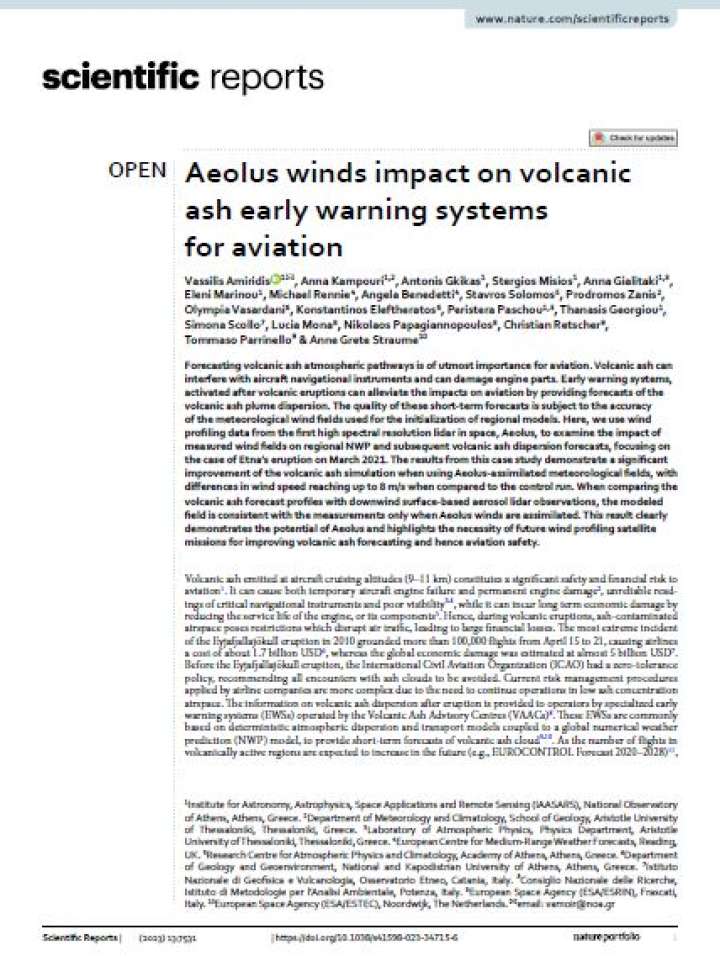Aeolus winds impact on volcanic ash early warning systems for aviation
In this study, researchers use wind profiling data from the first high spectral resolution lidar in space, Aeolus, to examine the impact of measured wind fields on regional numerical weather prediction (NWP) and subsequent volcanic ash dispersion forecasts, focusing on the case of Etna’s eruption on March 2021. Forecasting volcanic ash atmospheric pathways is of utmost importance for aviation. Volcanic ash can interfere with aircraft navigational instruments and can damage engine parts. Early warning systems, activated after volcanic eruptions can alleviate the impacts on aviation by providing forecasts of the volcanic ash plume dispersion. The quality of these short-term forecasts is subject to the accuracy of the meteorological wind fields used for the initialization of regional models.
The results from this case study demonstrate a significant improvement of the volcanic ash simulation when using Aeolus-assimilated meteorological fields, with differences in wind speed reaching up to 8 m/s when compared to the control run. When comparing the volcanic ash forecast profiles with downwind surface-based aerosol lidar observations, the modeled field is consistent with the measurements only when Aeolus winds are assimilated. This result clearly demonstrates the potential of Aeolus and highlights the necessity of future wind profiling satellite missions for improving volcanic ash forecasting and hence aviation safety.
Explore further
